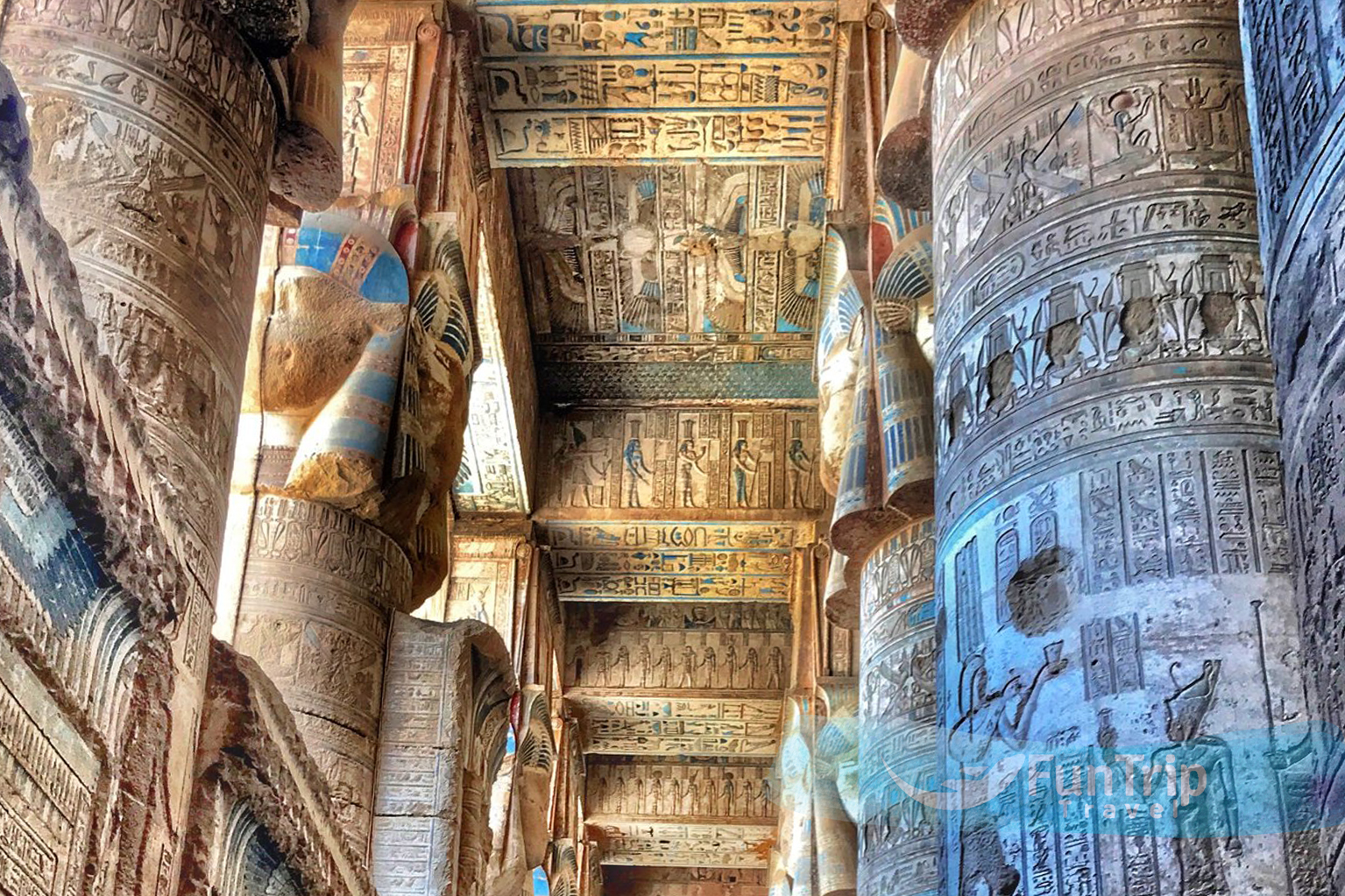 Qena
QenaQena is located 62 kilometres north of Luxor on a huge bend of the Nile and at the intersection of the main Nile road and the road that runs across the desert to the Red Sea towns of Port Safaga and Hurghada. A market town and provincial capital, it’s a good starting point for a trip to the spectacular temple complex at Dendera, which is just outside town. It’s also the place to be on the 14th of the Islamic month of Sha’ban, when the city’s patron saint, Abdel Rehim alQenawi, from the 12th century, is honored. Qena is one of Egypt’s most beautiful cities, with the cleanest streets and most leafy promenades, and it placed third in the UNESCO City Beauty contest. Qena manufactures a popular type of water container made of porous clay that keeps water 5-6oC cooler than the ambient temperature. Qena also has one of Egypt’s highest concentrations of Coptic Christians (35% of the total population).
EXPLORE. CONNECT. CREATE MEMORIES
Temple of Hathor at Dendera
Dendera is located 76 kilometres northwest of Luxor. Despite being much smaller than earlier temples such as Karnak, Dendera Temple is a massively impressive monument.This is due to both its excellent state of preservation and the abundance of reliefs and inscriptions on the wall, which serve as an excellent example of pharaonic late period decorative art. Dendera was once the capital of Upper Egypt, and the ruins of this once-great city can be found on the Nile’s west bank, across from the modern town of Qena. The temple, on the other hand, dates from the much later Ptolemaic era, with sections built by the Roman emperors Tiberius and Trajan.

